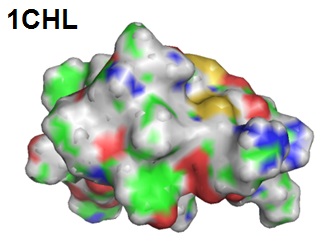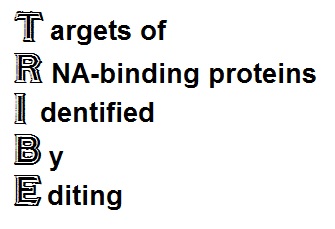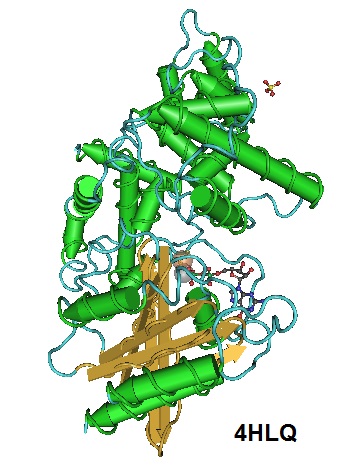|
|
|
Bio-Synthesis Newsletter - May 2016
|
A new ultra sensitive BNA based Clamping Method
 Bio-Synthesis has developed a new BNA based clamping kit for the detection of the BRAF V600E mutation. The human BRAF gene is involved in the RAS-RAF-MEK-ERK signal pathway where it plays an important role in regulating cellular responses to extracellular signals. BRAF is also referred to as proteo-oncogene B-Raf and v-Raf murine sarcoma viral homolog B. The BRAF gene encodes a protein of the raf/mil family of serine/threonine protein kinases and plays a role in the regulation of the MAP kinase/ERKs signaling pathway. Frequent somatic mutations of the BRAF gene have been detected in various types of human cancers such as malignant melanoma, non-small cell lung cancer, colorectal cancer, papillary carcinoma of the thyroid, ovarian cancer and hairy cell leukemia. A single point 1799T> A (V600E) transversion represents the most common mutation of BRAF. This mutant has increased kinase activity and serves as a driver mutation in several types of cancer and confers increased sensitivity to tyrosine kinase inhibitors. This mutation can be viewed as a predictive biomarker that provides information on the outcome of cancer in patients. Our ultra sensitive BRAF Codon 600 (V600E) mutation analysis kit uses Bridged Nucleic Acids (BNAs) to allow for rapid and convenient real-time PCR detection. This kit allows for a highly specific and selective detection of the mutant gene without false positives. Bio-Synthesis has developed a new BNA based clamping kit for the detection of the BRAF V600E mutation. The human BRAF gene is involved in the RAS-RAF-MEK-ERK signal pathway where it plays an important role in regulating cellular responses to extracellular signals. BRAF is also referred to as proteo-oncogene B-Raf and v-Raf murine sarcoma viral homolog B. The BRAF gene encodes a protein of the raf/mil family of serine/threonine protein kinases and plays a role in the regulation of the MAP kinase/ERKs signaling pathway. Frequent somatic mutations of the BRAF gene have been detected in various types of human cancers such as malignant melanoma, non-small cell lung cancer, colorectal cancer, papillary carcinoma of the thyroid, ovarian cancer and hairy cell leukemia. A single point 1799T> A (V600E) transversion represents the most common mutation of BRAF. This mutant has increased kinase activity and serves as a driver mutation in several types of cancer and confers increased sensitivity to tyrosine kinase inhibitors. This mutation can be viewed as a predictive biomarker that provides information on the outcome of cancer in patients. Our ultra sensitive BRAF Codon 600 (V600E) mutation analysis kit uses Bridged Nucleic Acids (BNAs) to allow for rapid and convenient real-time PCR detection. This kit allows for a highly specific and selective detection of the mutant gene without false positives.
|
|
Read More
|
|
|
Bee glue may be good for you
Bee glue, also known as Propolis, contains many beneficial compounds that are known to enhance human health. Propolis is a sticky dark-colored material that honeybees collect from plants. Bees mix it with wax and use it in the construction of their nests. Since ancient times, Propolis has been used in folk medicine. More recently, Propolis has also been investigated for its ability to prevent cancer. Traditionally, gas chromatography in tandem with mass spectrometry has been used for the analysis of compounds present in propolis. Major compounds found in Propolis are aromatic compounds, phenolics, flavanones, flavones, chalcones, and phenolic glycerides, many of which are antioxidants. Propolis possesses a broad spectrum of biological activities. Anti-hepatotoxic, antitumor, antiviral, antioxidant, antimicrobial, and anti-inflammatory properties are attributed to Propolis.
|
|
Chlorotoxin, a Natural Scorpion Toxin
 Chlorotoxin is a new peptide investigated for its use in the diagnostic and treatment of cancer. Chlorotoxin is a 36 mer cysteine-rich neuropeptide toxin originally isolated from the venom of the scorpion Leiurus quinquestriatus. Initially used as a pharmacological tool for the characterization of chloride channels it is now used for the study of cancer cells. Chlorotoxin targets various cancer cells including glioma, melanoma, small cell lung carcinoma, neuroblastoma, and medulloblastoma. Fluorescence or iodine labeling of this peptide offers new aspects in cancer diagnostics. Chlorotoxin (CTx) can be chemically synthesized and folded into its natural occurring fold. It is a targeting agent for the delivery of anti-tumor agents to specific cancer or tumor tissues. Chlorotoxin is a new peptide investigated for its use in the diagnostic and treatment of cancer. Chlorotoxin is a 36 mer cysteine-rich neuropeptide toxin originally isolated from the venom of the scorpion Leiurus quinquestriatus. Initially used as a pharmacological tool for the characterization of chloride channels it is now used for the study of cancer cells. Chlorotoxin targets various cancer cells including glioma, melanoma, small cell lung carcinoma, neuroblastoma, and medulloblastoma. Fluorescence or iodine labeling of this peptide offers new aspects in cancer diagnostics. Chlorotoxin (CTx) can be chemically synthesized and folded into its natural occurring fold. It is a targeting agent for the delivery of anti-tumor agents to specific cancer or tumor tissues.
Reference: Toxins 2015, 7, 1079-1101.
|
|
Read More
|
|
|
TRIBE, finding RNA binding protein targets
 The technique called TRIBE allows for the identification of cell-specific RNA-binding protein targets. TRIBE stands for "Targets of RNA-binding proteins Identified by editing." A host of proteins that bind to pre-mRNA and mRNA is involved in post-transcriptional regulation. Post-transcriptional regulation is essential for correct splicing, localization, and translation of cellular components needed for optimal functioning of cells. Since the identification of cell-specific RNA-binding proteins (RBP) and their targets is challenging, McMahon et al. in 2016 developed the TRIBE technique that couples an RBP to the catalytic domain of the Drosophila RNA-editing enzyme adenosine deaminase acting on RNA (ADAR) that allows expression of this type of conjugates in vivo. Editing specificity is determined by the RNA recognition features of the RBP because the double-stranded RNA-binding regions are missing from the fusion protein. Using TRIBE, RBP targets are marked with novel RNA editing event. These events are identified via RNA sequencing. McMahon reported that TRIBE can be used without the need for antibodies and also works when using small numbers of specific cells. The technique called TRIBE allows for the identification of cell-specific RNA-binding protein targets. TRIBE stands for "Targets of RNA-binding proteins Identified by editing." A host of proteins that bind to pre-mRNA and mRNA is involved in post-transcriptional regulation. Post-transcriptional regulation is essential for correct splicing, localization, and translation of cellular components needed for optimal functioning of cells. Since the identification of cell-specific RNA-binding proteins (RBP) and their targets is challenging, McMahon et al. in 2016 developed the TRIBE technique that couples an RBP to the catalytic domain of the Drosophila RNA-editing enzyme adenosine deaminase acting on RNA (ADAR) that allows expression of this type of conjugates in vivo. Editing specificity is determined by the RNA recognition features of the RBP because the double-stranded RNA-binding regions are missing from the fusion protein. Using TRIBE, RBP targets are marked with novel RNA editing event. These events are identified via RNA sequencing. McMahon reported that TRIBE can be used without the need for antibodies and also works when using small numbers of specific cells.
Reference: Cell 165, April 21, 2016, pages 742-753.
|
|
Read More
|
|
|
A metastasis promoting protein has recently been identified
 Finding a way to slow down or even totally inhibit metastasis, or the spread of cancer, is the holy grail of cancer researchers. Recently a protein promoting metastasis has been discovered. Halberg et al. in early 2016 reported that phosphatidylinositol transfer protein, cytoplasmic 1 (PITPNC1) recruits the Ras-related protein RAB1B to the Golgi compartment of the cell and enhances vesicular secretion by Golgi localization of RAB1B via GOLPH3 recruitment. PITPNC1 was identified as a PI4P-binding protein that enhances vesicular secretion capacity in malignancy. Rab1 mediates endoplasmatic reticulum-Golgi trafficking and plays a role in Legionella pneumophila pathogenesis as well. This discovery may help to decipher pathways involved in metastasis and finding new targets that may allow the inhibition of metastasis soon. Finding a way to slow down or even totally inhibit metastasis, or the spread of cancer, is the holy grail of cancer researchers. Recently a protein promoting metastasis has been discovered. Halberg et al. in early 2016 reported that phosphatidylinositol transfer protein, cytoplasmic 1 (PITPNC1) recruits the Ras-related protein RAB1B to the Golgi compartment of the cell and enhances vesicular secretion by Golgi localization of RAB1B via GOLPH3 recruitment. PITPNC1 was identified as a PI4P-binding protein that enhances vesicular secretion capacity in malignancy. Rab1 mediates endoplasmatic reticulum-Golgi trafficking and plays a role in Legionella pneumophila pathogenesis as well. This discovery may help to decipher pathways involved in metastasis and finding new targets that may allow the inhibition of metastasis soon.
Reference: a. Halber et al. 2016. b. Gavriljuk et al. 2012.
|
|
Read More
|
|
|
|
|
|
|
|
Bio-Synthesis, Inc.
800 Mario Court, Lewisville, TX 75057, USA
Toll Free: 800.227.0627 | 1.972.420.8505 (Intl.)
|
|
|
|
|